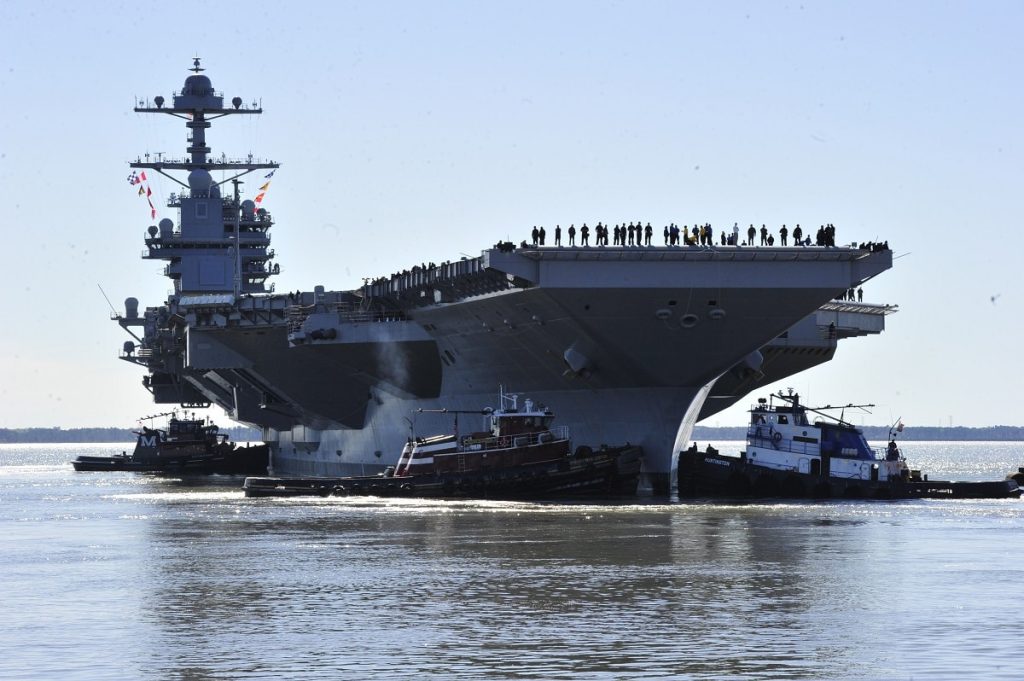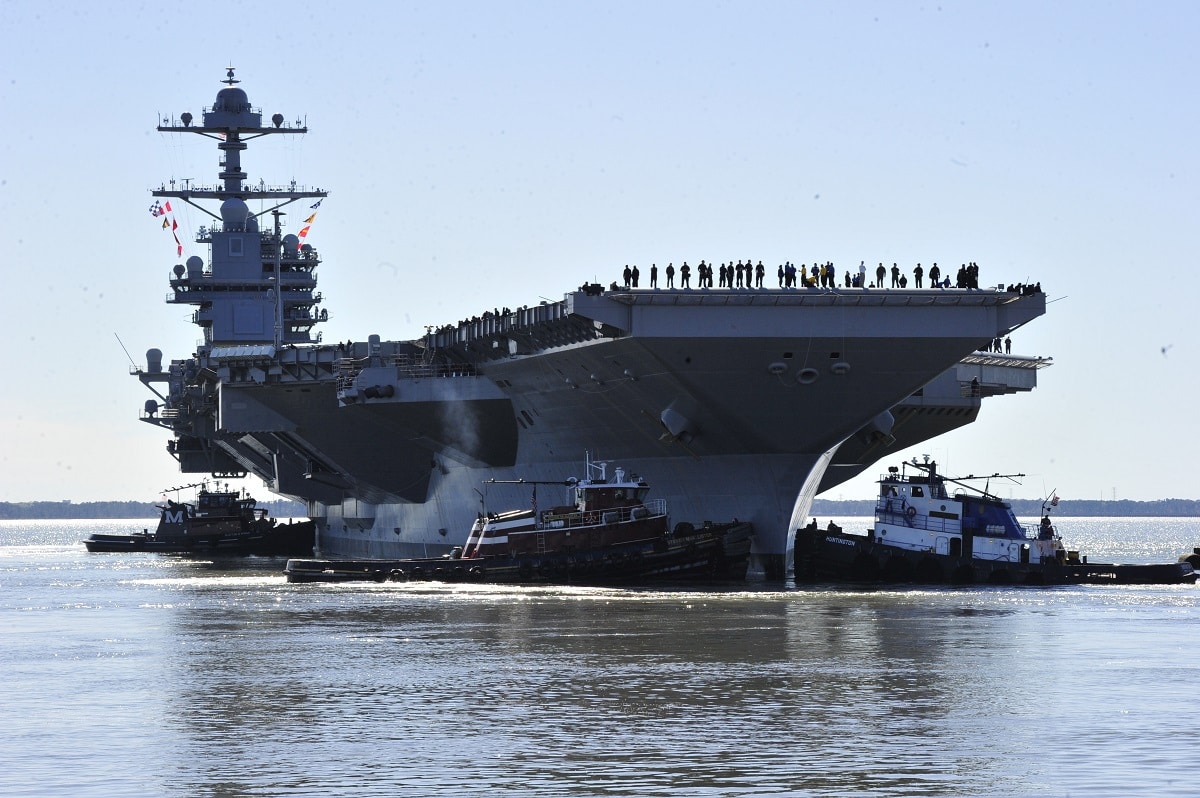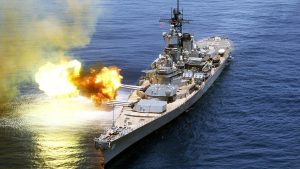An aircraft carrier is a floating metropolis, so it has quite a few restrooms. If they become clogged, it will cause serious issues.

NEWPORT NEWS, Va. (April 8, 2017) – Pre-Commissioning Unit Gerald R. Ford (CVN 78) Sailors man the rails as the ship departs Huntington Ingalls Industries Newport News Shipbuilding for builder’s sea trials off the coast. The first- of-class ship—the first new U.S. aircraft carrier design in 40 years—will spend several days conducting builder’s sea trials, a comprehensive test of many of the ship’s key systems and technologies. (U.S. Navy photo by Chief Mass Communication Specialist Christopher Delano)
You can’t avoid nature’s call, not even on an aircraft carrier. The Navy has its slang phrase for answering the call of nature; they call it a “head call.” The term “head” is indeed used to describe a ship’s bathroom.
What if I told you it costs $400,000 to fix a toilet that is clogged in the head? To remove the clogs, sailors must perform an extremely costly procedure known as an acid flush of the sewage system. The Navy claims this is no longer an issue but first reported the problem in 2020 on the Nimitz-class USS George H. W. Bush and the newer USS Gerald R. Ford. Government watchdogs are concerned because fixing these overflowing toilets is normally simple but has become prohibitively expensive and time-consuming.
The military paid $640 per toilet seat aboard jets, which led to a budget scandal at the Pentagon in 1986. It was a clear example of wasteful government expenditures, and it came to represent the problems associated with misguided military spending more generally. The Navy’s most expensive carriers experienced plumbing issues much later but at a considerably higher price.
They called Government Accountability Office to look into the stench in 2020. It will still happen in 2022, 36 years after scamming the government out of money for toilet seats. Worse, the Office discovered 149 other carrier maintenance deficiencies beyond sewage problems. The damage to the Navy’s budget from these issues was $130 billion. Yet, the staggering cost of the acid flushes stood out to finance experts as an issue.
Due to the high volume of people using the restroom on ships, the GAO determined that a specialized system, similar to what is used on commercial airliners, be implemented to accommodate the needs of nearly 4,000 sailors. The GAO reported that the price of an acid flush was close to USD 500,000. It needed to be made clear to the 2020 watchdog agency’s staff how often acid flushes would be necessary. The GAO referred to it as “an unanticipated maintenance action for the entire service life of the ship.”
It may be occurring on other ships as well.
The GAO was still determining how much the acid flushes cost. Navy officials “had not determined how often and for how many ships this action will need to be repeated,” making the overall cost impact “impossible to assess.”
As one might expect from a city on the move, a carrier has plenty of restrooms, with around 432 available. Gerald R. Ford’s “gender neutral” facilities lack urinals.
The Navy claims that the issue has been resolved and that 94 percent of the toilets on the carriers included in the study function as intended. The service department speculates that the sailors were flushing illegal items, which led to the backup. Let’s give the Navy the benefit of the doubt and assume the toilet issues have been fixed since 2020 when no other government monitoring mechanism brought attention to the ships’ lack of functional toilets.
That carrier maintenance is expensive is highlighted, nevertheless. These recurring costs are in addition to those incurred while refueling nuclear reactors and performing major overhauls. These modifications are now being made to two carriers at the Newport News shipyard. We can only pray that nobody wastes time in the sewage system when they could be working on more important tasks.






